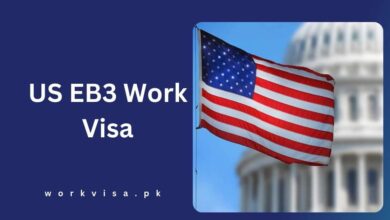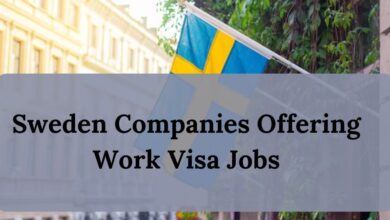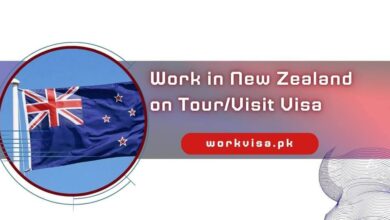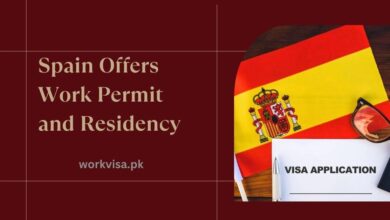Australian Work Visa Types 2025 – List of Changes
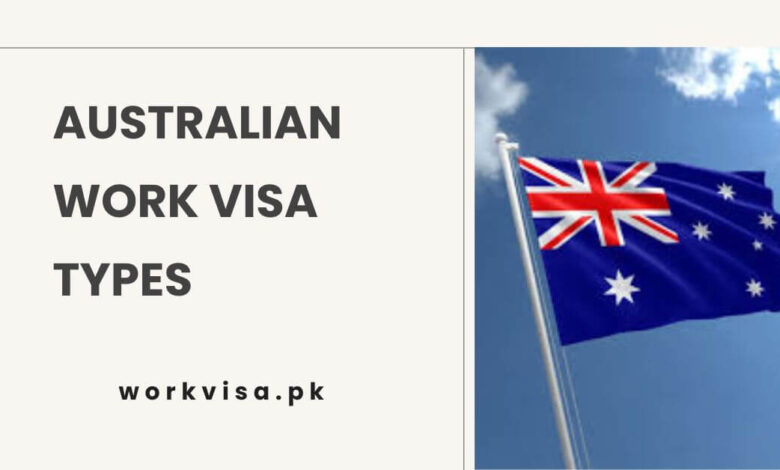
Australia remains a highly sought-after destination for youthful adventurers, experienced professionals, and seasonal workers who are in search of new experiences and career opportunities. The Australian government has implemented substantial policy and eligibility modifications to a variety of work visa categories, which are indicative of the government’s commitment to compensating foreign workers fairly, promoting economic development, and addressing labor shortages.
The process of navigating these changes can be overwhelming, which is why this article will provide a comprehensive overview of the different work visa types that are available in Australia. There is likely a visa that is specifically designed to meet the requirements of a skilled professional, a recent graduate, or an individual seeking short-term employment.
Therefore, let us investigate the available Australian employment visa options and determine the most suitable one for your needs.
Check Also: Skilled Worker Jobs in Australia – Work Visa
List of Australian Work Visa Types:
The following 10 Australian work visas will continue to be available to qualified laborers from all over the world:
| Australia Work Visa Types | Purpose of Visas |
|---|---|
| Temporary Skill Shortage (TSS) Visa (Subclass 482) | Allows employers to address labor shortages by bringing in skilled workers for up to four years. |
| Temporary Work (Short Stay Specialist) Visa (Subclass 400) | For short-term, highly specialized work in Australia, typically up to three months. |
| Temporary Activity Visa (Subclass 408) | Permits participation in specific short-term activities, including cultural or social events. |
| Employer Nomination Scheme (ENS) Visa (Subclass 186) | Allows skilled workers nominated by an Australian employer to live and work permanently in Australia. |
| Skilled Independent Visa (Subclass 189) | A points-based visa for skilled workers not sponsored by an employer, state, or family member, granting permanent residency. |
| Skilled Nominated Visa (Subclass 190) | For skilled workers nominated by an Australian state or territory, offering permanent residency. |
| Working Holiday Visa (Subclass 417) | Allows young adults (18-30 or 18-35 for some countries) from eligible nations to work and holiday in Australia for up to 12 months. |
| Work and Holiday Visa (Subclass 462) | Similar to the Subclass 417 visa, but for different countries; permits work and travel in Australia for up to 12 months. |
| Training Visa (Subclass 407) | Enables individuals to participate in workplace-based training to enhance skills in their current occupation or field of study. |
| Temporary Graduate Visa (Subclass 485) | For international students who have recently graduated from an Australian institution, allowing them to live, study, and work temporarily in Australia. |
In contrast, the following are the modifications to the immigration policies for the specific Australian visa types:
| Visa Types (New) | Changes |
|---|---|
| Temporary Skill Shortage (TSS) Visa (Subclass 482) | – Replacement: To be replaced by the Skills in Demand (SID) visa with three (03) pathways: Specialist Skills, Core Skills, and Essential Skills. – Work Experience Requirement: Reduced from two (02) years to one year. |
| Temporary Work (Short Stay Specialist) Visa (Subclass 400) | No specific policy changes announced |
| Temporary Activity Visa (Subclass 408) | No specific policy changes announced |
| Employer Nomination Scheme (ENS) Visa (Subclass 186) | – Permanent Residency Pathway: SID visa holders can transition to permanent residency through the Temporary Residence Transition stream after two years of employment. |
| Skilled Independent Visa (Subclass 189) | No specific policy changes announced |
| Skilled Nominated Visa (Subclass 190) | No specific policy changes announced |
| Working Holiday Visa (Subclass 417) | – UK Citizens Exemption: UK citizens exempt from specified work requirement for second/third working holiday visas. – Ballot Process: Introduced for applicants from China, India, and Vietnam to manage demand. |
| Work and Holiday Visa (Subclass 462) | – Ballot Process: Introduced for applicants from China, India, and Vietnam to manage demand. |
| Training Visa (Subclass 407) | No specific policy changes announced |
| Temporary Graduate Visa (Subclass 485) | – Age Limit Reduction: Maximum age reduced from 50 to 35 years. |
Benefits:
- Employment Prospects in a Growing Economy: There are numerous opportunities in industries such as healthcare, information technology, engineering, construction, education, and agriculture in Australia, which boasts a robust and stable economy. A work visa enables individuals to access these employment markets, which can be particularly beneficial for skilled workers who are seeking to advance their careers.
- Route to Permanent Residency and Citizenship: Pathways to permanent residency are available through numerous Australian work visas, particularly skilled migration visas (e.g., the Skilled Independent Visa – Subclass 189 or the Employer Nomination Scheme – Subclass 186). After a specified period, permanent residency can result in Australian citizenship, which offers long-term security and additional benefits.
- Access to a High Quality of Life: Australia is recognized for its exceptional quality of life, which is reflected in its high rankings in the areas of healthcare, education, infrastructure, and environmental integrity. Australia’s exceptional healthcare services, secure cities, and generally high standard of living are accessible to individuals and their families with a work visa.
- Opportunity to Involve Family Members: Applicants are permitted to include family members, including dependent children and spouses or companions, in their visa applications for the majority of Australian work visas. This implies that families are able to relocate and reside together, as well as access health and education services and experience comparable benefits.
- Access to Australia’s World-Class Healthcare System: The Medicare system, Australia’s public healthcare initiative, is highly regarded for its quality and accessibility, and many work visas in the country provide access to it. This access has the potential to substantially reduce healthcare costs and offer peace of mind to visa holders and their families.
- Access to Student Loans and Quality Education for Children: The children of visa holders are permitted to attend public institutions in Australia, frequently at a reduced or no cost, using an Australian work visa. The financial burden of university studies is significantly alleviated by the ability to access government-backed student loans (HECS-HELP) for tertiary education if the visa holder ultimately becomes a permanent resident.
- A Welcoming Society and Cultural Diversity: Australia is a multicultural society that boasts a diverse array of cultural activities, traditions, and languages. The nation is recognized for its inclusive approach to immigrants, which fosters a sense of acceptance among newcomers. This diversity cultivates a vibrant, diverse environment that is frequently more hospitable to individuals from other countries.
- Independence to Travel Within and Outside of Australia: During the duration of the visa’s validity, numerous Australian work visas permit travelers to enter and exit the country. For individuals who have family members living abroad or desire the freedom to travel internationally for business or pleasure while maintaining a work visa, this adaptability is advantageous.
- Skill Development and Networking: Visa holders are able to develop international professional networks, acquire exposure to advanced industry practices, and improve their skills by working in Australia. This experience can be invaluable for career development and can give you a competitive edge in future employment opportunities, both within and outside of Australia.
- Potential for Employer Sponsorship: Employers are permitted to sponsor experienced foreign workers for positions that are unfilled locally under certain Australian work visas, including the Temporary Skill Shortage – Subclass 482. Employer-sponsored visas frequently result in long-term employment opportunities and may offer pathways to permanent residency if the employer continues to sponsor the visa holder.
Frequently Asked Questions:
-
What are the main types of Australian work visas?
There are both sponsored and non-sponsored work visas. Key types include the Skilled Independent Visa (subclass 189), Skilled Regional Visa (subclass 887), Temporary Graduate Visa (subclass 485), and Employer Nomination Scheme Visa (subclass 186).
-
Do I need a job offer to apply for an Australian work visa?
Some visas, like the Skilled Independent Visa (subclass 189), do not require a job offer. However, others, such as the Employer Nomination Scheme Visa (subclass 186), do require a job offer or sponsorship.
-
Which Australian work visas require job offers and sponsorships?
You need a job offer or sponsorship for some types of visas, like the Regional Sponsor Migration Scheme (subclass 187), the Employer Nomination Scheme visa (subclass 186), the Skilled Nominated visa (subclass 190), the Temporary Skill Shortage visa (subclass 482), and the Business Innovation and Investment (Provisional visa) (subclass 188).

